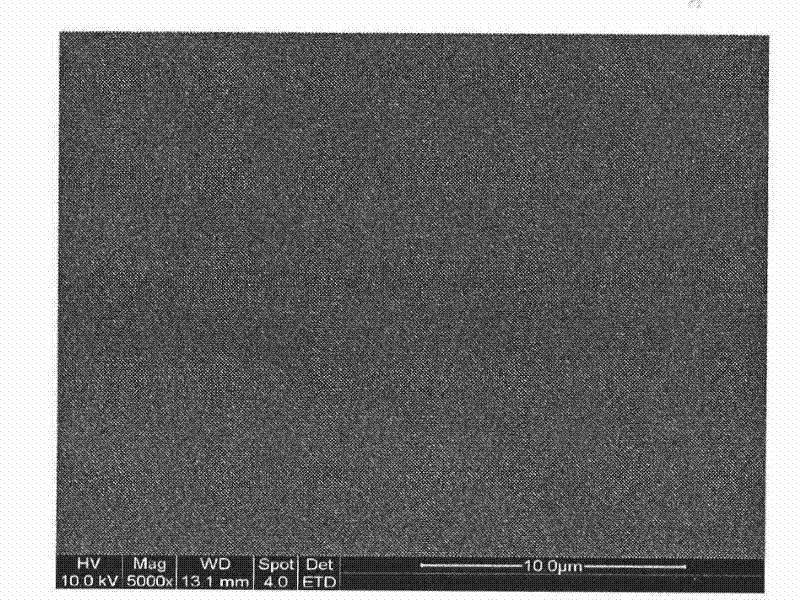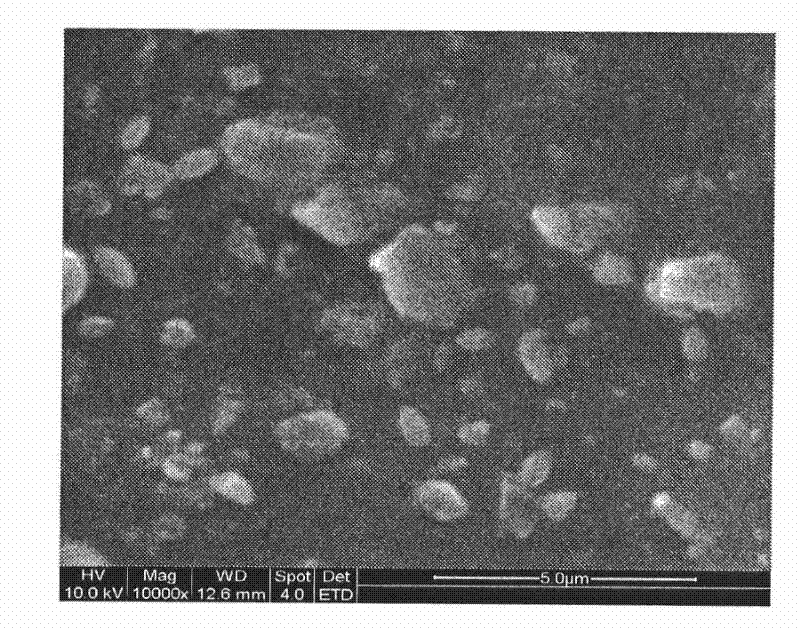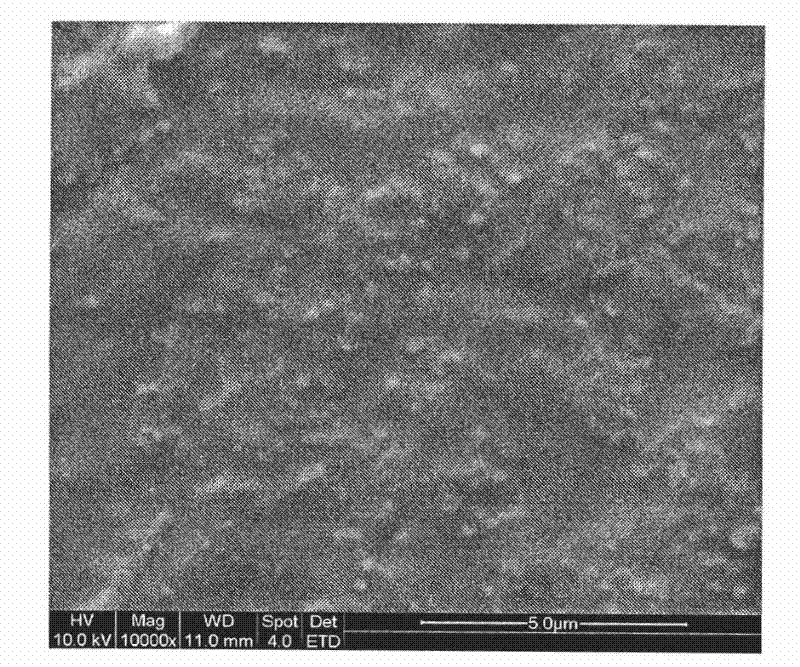Preparation method of ultraviolet cured silica sol modified aqueous urethane acrylate dispersoid
A urethane acrylate and acrylate technology, applied in the direction of polyurea/polyurethane coatings, coatings, etc., can solve the problems that the mechanical properties of the coating surface are not significantly improved, lack of interaction, and the modification process is cumbersome, and the reaction is easy to achieve. The effect of control, simple process and wide range of emulsion particle size
- Summary
- Abstract
- Description
- Claims
- Application Information
AI Technical Summary
Problems solved by technology
Method used
Image
Examples
Embodiment 1
[0030] This example is a control example without silica sol modification.
[0031] Add 38.0 g of isophorone diisocyanate (IPDI) into a 250 mL four-necked flask equipped with a stirrer, a thermometer, and a reflux condenser, and add 46.7 g of polyethylene glycol that has been dehydrated through molecular sieves dropwise with a dropping funnel while stirring at room temperature. For the mixed solution of diol PEG400 and 0.05g catalyst dibutyltin dilaurate (DBTDL), the dropping speed is controlled within 1.5h. After the dropwise addition, react at 45±5°C for 1-2h, then raise the temperature to 60°C until the measured NCO group reaches the theoretical value (measured by di-n-butylamine back titration), and NCO-terminated polyurethane prepolymer I is obtained.
[0032] Add 5.16 g of pre-dried dimethylol propionic acid (DMPA) powder into polyurethane prepolymer I in three batches, and react at 65±5° C. During the reaction, add an appropriate amount of acetone to adjust the viscosity...
Embodiment 2
[0036] Add 25.7g of isophorone diisocyanate (IPDI) into a 250mL four-necked flask equipped with a stirrer, a thermometer and a reflux condenser, and add molten 59.1g of PEG1000 and 0.05g of catalyst dropwise with a dropping funnel while stirring at room temperature For the mixed solution of stannous octoate, the dropping speed is controlled within 1.5h. After the dropwise addition, react at 45±5°C for 1-2h, then raise the temperature to 60°C until the measured NCO group reaches the theoretical value (measured by di-n-butylamine back titration), and NCO-terminated polyurethane prepolymer I is obtained.
[0037]Add 5.69g of dried dimethylolbutyric acid (DMBA) into the polyurethane prepolymer I in three batches, react at 65±5°C, and add an appropriate amount of acetone during the reaction to adjust the viscosity of the system. The degree of reaction was measured by di-n-butylamine back titration method, and the prepolymer II containing hydrophilic groups was obtained after reachi...
Embodiment 3
[0041] Add 32.2g of 2,4-toluene diisocyanate (TDI) into a 250mL four-necked flask equipped with a stirrer, a thermometer and a reflux condenser, and add 52.5g of polystyrene dehydrated through molecular sieves dropwise with a dropping funnel while stirring at room temperature. For the mixed solution of propylene glycol PPG400 and 0.05g catalyst triethylamine, the dropping rate is controlled within 1.5h. After the dropwise addition, react at 45±5°C for 1-2h, then raise the temperature to 60°C until the measured NCO group reaches the theoretical value (measured by di-n-butylamine back titration), and NCO-terminated polyurethane prepolymer I is obtained.
[0042] Add 5.16 g of dried dimethylol propionic acid (DMPA) powder into polyurethane prepolymer I in three batches, and react at 65±5° C. During the reaction, add an appropriate amount of acetone to adjust the viscosity of the system. The degree of reaction was measured by di-n-butylamine back titration method, and the prepolym...
PUM
 Login to View More
Login to View More Abstract
Description
Claims
Application Information
 Login to View More
Login to View More - R&D
- Intellectual Property
- Life Sciences
- Materials
- Tech Scout
- Unparalleled Data Quality
- Higher Quality Content
- 60% Fewer Hallucinations
Browse by: Latest US Patents, China's latest patents, Technical Efficacy Thesaurus, Application Domain, Technology Topic, Popular Technical Reports.
© 2025 PatSnap. All rights reserved.Legal|Privacy policy|Modern Slavery Act Transparency Statement|Sitemap|About US| Contact US: help@patsnap.com



